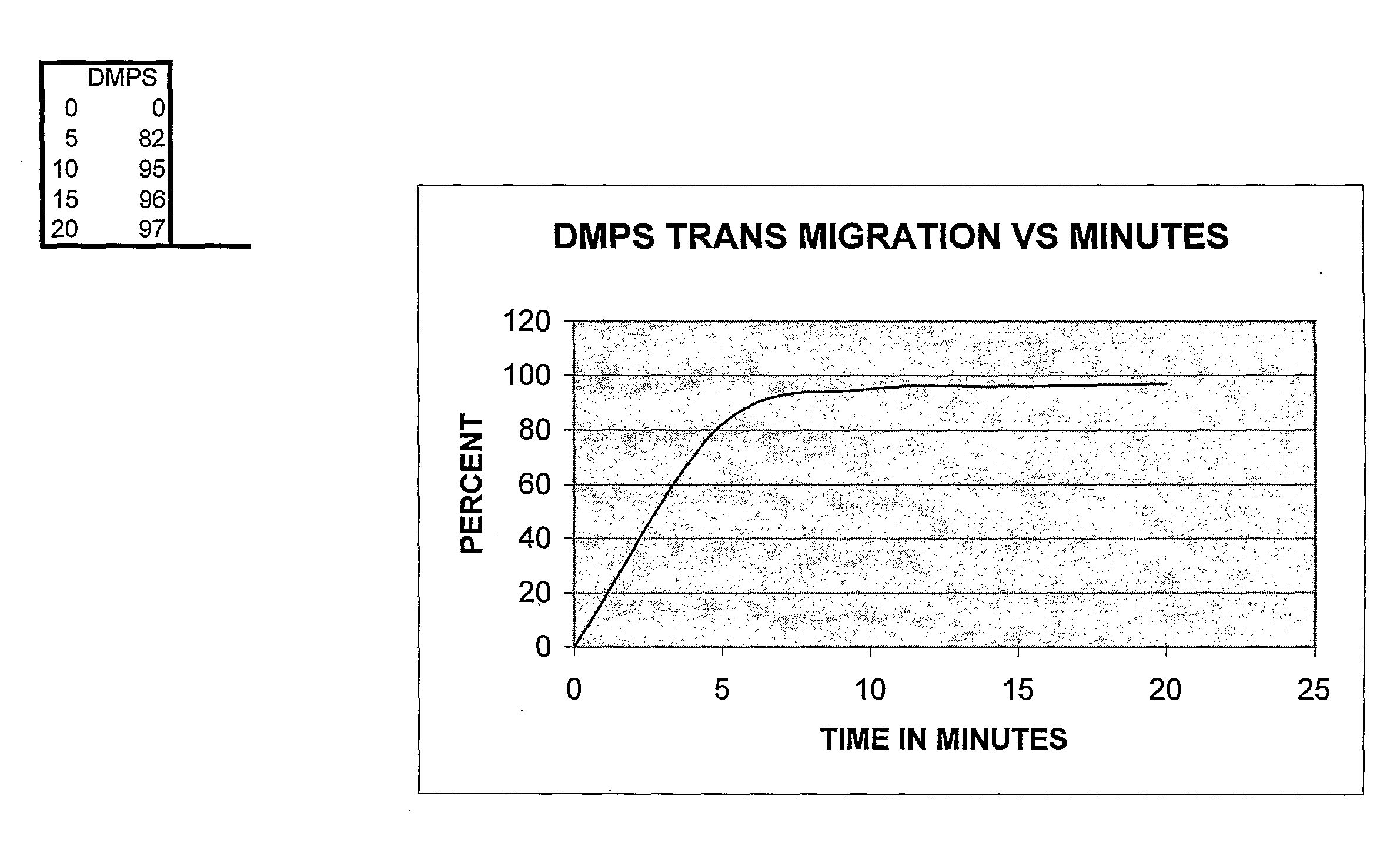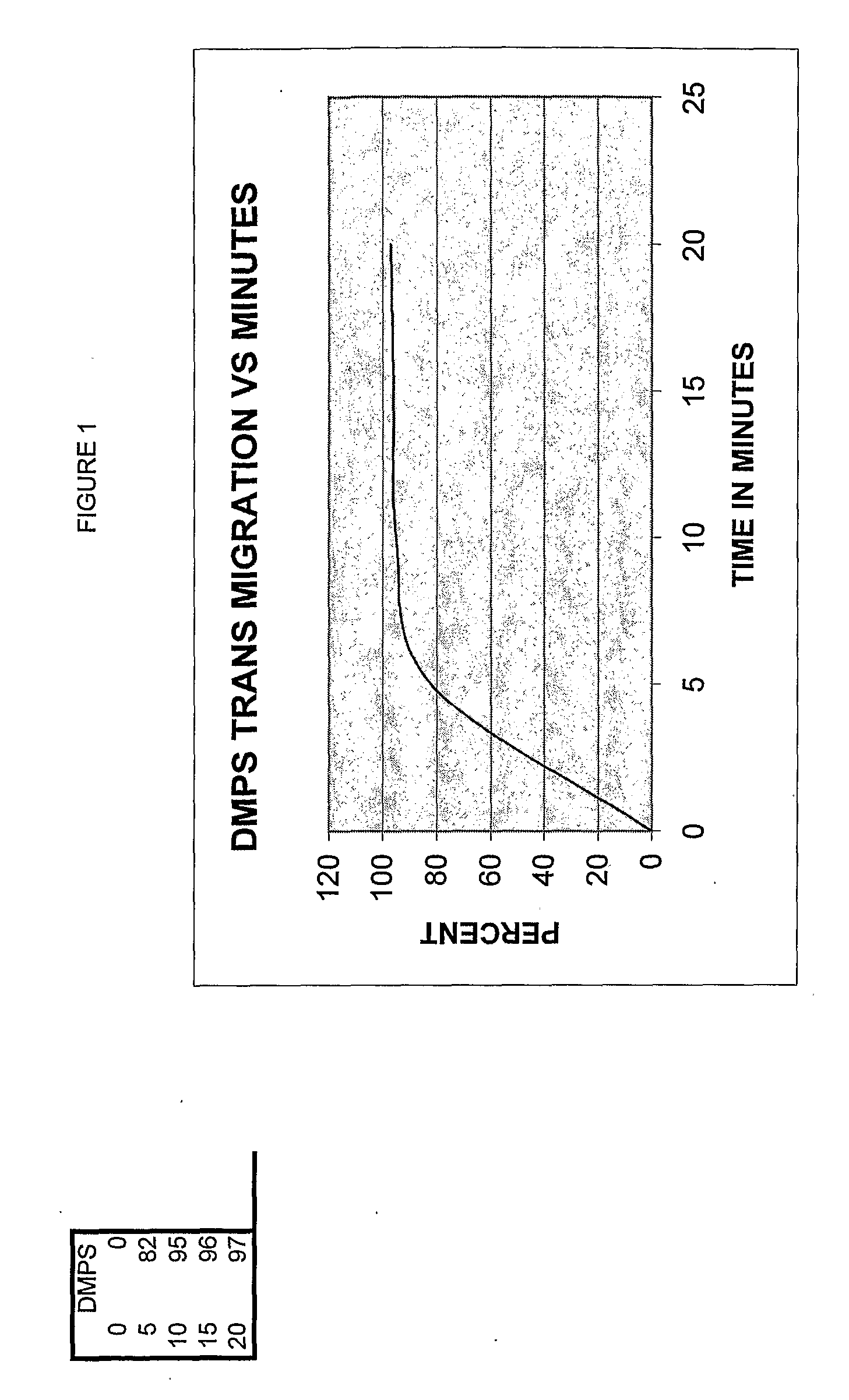Transdermal Delivery Systems and Transdermal Chelation Preparations
a technology of chelating agent and delivery system, which is applied in the direction of aerosol delivery, extracellular fluid disorder, metabolism disorder, etc., can solve the problems of adverse effects of chemical barrier modification, and achieve safe and rapid transmigration of medicaments safe and rapid effect of drug transmigration
- Summary
- Abstract
- Description
- Claims
- Application Information
AI Technical Summary
Benefits of technology
Problems solved by technology
Method used
Image
Examples
example 1
Transdermal Chelation Preparation (TDCP)
[0118]
EXAMPLE 1Transdermal Chelation Preparation (TDCP)% WeightIngredientConc.83.12%WATER3.93%DMPS1 mg / drop11.94%GLUTATHIONE3.25%GLYCERIN3.25%POLYETHYLENE GLYCOL0.65%MJRY5010.39%CREAM0.26%CITRIC ACID0.14%COLLOID710H96
[0119]In one aspect, DMPS ranges from 0.001 to 4.2 mg / drop; e.g. 0.1 mg per drop. Additional exemplary humectants, wetting agents and thickeners include those members of this group that also have anti-microbial effects; e.g. propylene glycol is a wetting agent for the colloids, a humectant for the skin, and an anti-microbial in solution.
[0120]Humectants maintain epidermal hydration to permit DMPS delta time penetration. There are numerous other glycols and humectants which can be substituted.
[0121]Citric acid is a Lewis acid for conjugation with the Lewis base DMPS. They do not react covalently or do so to a small extent, rather the majority of the bonds formed are non-covalent. Niacin and niocinamide can also be used, however, ch...
example 2
Determining the Activity and Level of Activity of the Chelator(s)
[0126]This example describes methods for determining the activity and level of activity of the chelator(s) used in the preparations and formulations of the invention.
[0127]A fresh copper surface is prepared. The surface is gently heat oxidized. Next, the chelation quality was determined. About 0.0001 grams per drop (or 0.0029 g / ml) chelator effectively removed all the oxide form 1 cm sq in two minutes at a temperature of 98-99 degrees F. Then, the solution was diluted at 10% intervals to determine the point where it would not remove the oxide. There was a step wise decrease in chelation effect across the Cu test sample plate. A standard of chelation was graphed, see FIGS. 1 and 2.
[0128]A grid 1 sq cm area of an arm was marked off and the chelator solution applied to the skin; samples were taken at designated intervals. It was required to determine the correlation of one sq cm of skin and the application rate per one sq...
PUM
| Property | Measurement | Unit |
|---|---|---|
| MW | aaaaa | aaaaa |
| molecular weights | aaaaa | aaaaa |
| molecular weight | aaaaa | aaaaa |
Abstract
Description
Claims
Application Information
 Login to View More
Login to View More - R&D
- Intellectual Property
- Life Sciences
- Materials
- Tech Scout
- Unparalleled Data Quality
- Higher Quality Content
- 60% Fewer Hallucinations
Browse by: Latest US Patents, China's latest patents, Technical Efficacy Thesaurus, Application Domain, Technology Topic, Popular Technical Reports.
© 2025 PatSnap. All rights reserved.Legal|Privacy policy|Modern Slavery Act Transparency Statement|Sitemap|About US| Contact US: help@patsnap.com



